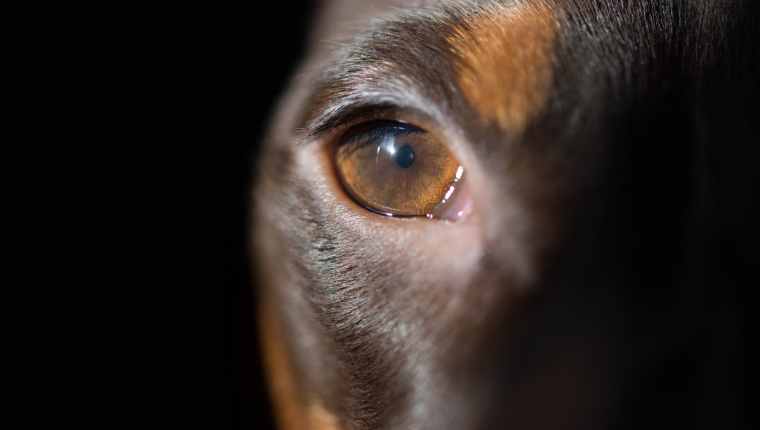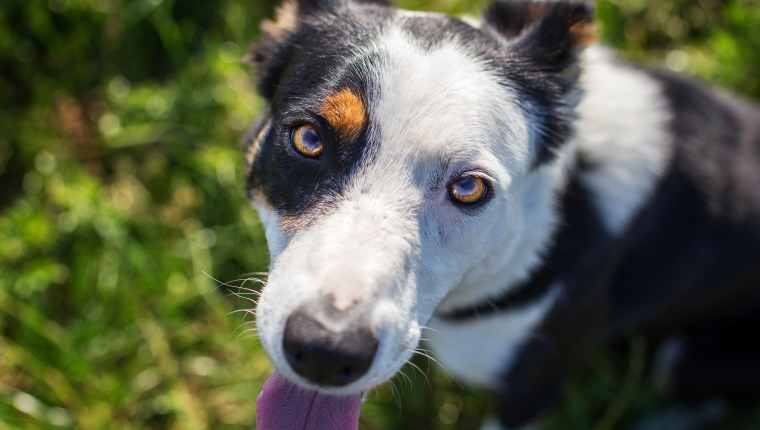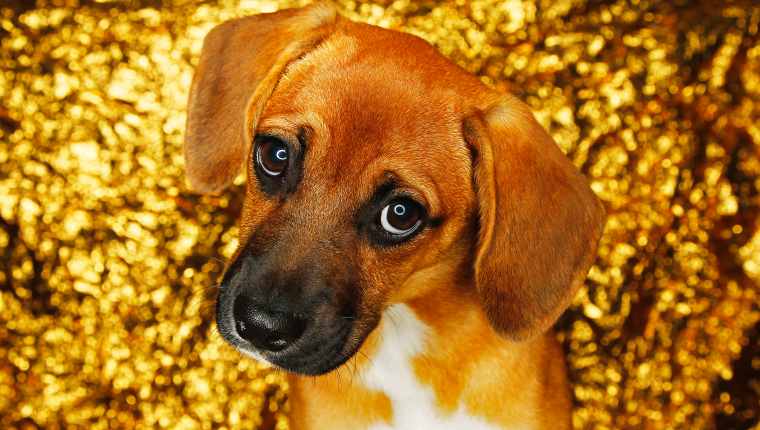You’ve seen those “puppy dog eyes” before with your pup–those pleading sad eyes they throw at you when they’ve either done something they shouldn’t have, or they want a treat or to go outside. They furrow their brow and stare at you until you can’t help but give in.
That look is their ultimate tool to get what they want, and we, as pet parents, have all succumbed to it once or twice. But how did our dogs learn this crafty expression? Who taught them how to do it? Funnily enough, we might very well be the culprits of that expression we so like to call puppy dog eyes.
In a study from the Proceedings of the National Academy of Sciences, researchers claim that dogs may have evolved that expressive sad look over thousands of years to better communicate with humans.
The Research Regarding The Puppy Dog Expression

Regarding the “puppy dog eyes” look, psychologist, Bridget Waller, from the University of Portsmouth stated, “This movement makes a dogs’ eyes appear larger, giving them a childlike appearance. It might be to mimic the facial movement humans make when they’re sad.”
Previous studies had already identified the muscle movement that raises a dog’s inner eyebrow and produces those adorable droopy eyes. They discovered this from the dissection of six dogs who were already deceased–no dogs were killed for this research. All the dogs had the exact same muscle. They also dissected four wolves, as well, and discovered they either did not have the muscle or barely did.
Researchers claim that dogs likely developed the “puppy dog eyes” after their ancestors split from wolves almost 15,000 years ago and started to warm up to humans. Researchers even studied facial structures of both wolf and dog cadavers from taxidermists, state wildlife organizations, and many museum specimens. They also did behavioral studies of wolves at wildlife parks and dogs at rescue shelters in both Germany and the United Kingdom.
During the behavioral portion of this study, experts observed humans interacting with dogs at a rescue shelter and wolves in captivity. The team of experts recorded the number of times the dogs and wolves made the “puppy dog” expression respectively. They also measured the intensity with which they expressed this look.
Wolves sometimes made the expression with a “low intensity” interacting with humans. However, the rescue dogs made it more frequently and with more intensity, which suggested the special human and dog bond.
So Did Humans Teach Dogs This Trick?

The evolution of this expression by dogs does not appear to be intentional. Yet, it would seem through the research that humans had a significant role in the development of this look.
Juliane Kaminski, the lead author of the University of Portsmouth, stated, “The findings suggest that expressive eyebrows in dogs may be a result of humans unconscious preferences that influenced selection during domestication. When dogs make the movement with their eyes, it seems to elicit a strong desire in humans to look after them. This would give dogs, that move their eyebrows more, a selection advantage over others and reinforce the ‘puppy dog eyes’ trait for future generations.”
What do you think of the evolution of the puppy dog eyes? Does your dog like to make puppy dog eyes at you? Let us know in the comments below!




